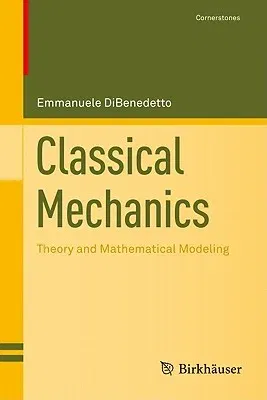Emmanuele Dibenedetto
(Author)Classical Mechanics: Theory and Mathematical Modeling (2011)Hardcover - 2011, 26 October 2010

Qty
1
Turbo
Ships in 2 - 3 days
In Stock
Free Delivery
Cash on Delivery
15 Days
Free Returns
Secure Checkout

Part of Series
Cornerstones
Print Length
351 pages
Language
English
Publisher
Birkhauser
Date Published
26 Oct 2010
ISBN-10
0817645268
ISBN-13
9780817645267
Description
Product Details
Author:
Book Edition:
2011
Book Format:
Hardcover
Country of Origin:
NL
Date Published:
26 October 2010
Dimensions:
23.39 x
15.6 x
2.24 cm
Genre:
Science/Technology Aspects
ISBN-10:
0817645268
ISBN-13:
9780817645267
Language:
English
Location:
Boston, MA
Pages:
351
Publisher:
Series:
Weight:
694 gm